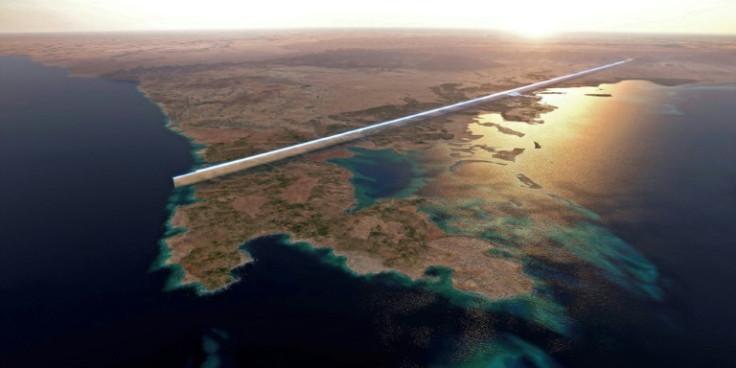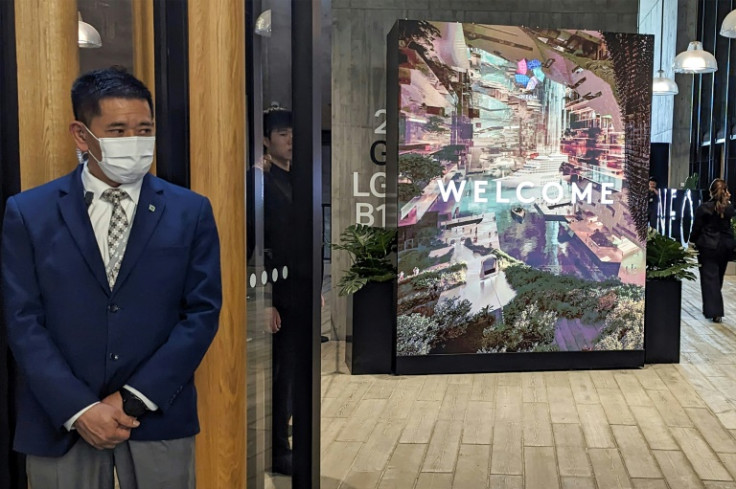Splashy Saudi Mega-project NEOM Chases Chinese Funds

Bigwigs behind a Saudi megacity dogged by questions about its viability have wrapped up a tour courting Chinese investors, detailing plans for a futuristic ski resort and 170-kilometre-long skyscrapers.
The roadshow for NEOM, brainchild of de facto ruler Crown Prince Mohammed bin Salman, travelled from Beijing to Shanghai to Hong Kong, where for two days would-be business partners flocked to a chic museum to peruse eye-popping renderings in various stages of development.
No major deals were announced, and top project officials did not address recent reports that NEOM's ambitious construction and population targets are being rolled back.
But they did offer a glimpse into how NEOM has evolved since Prince Mohammed first announced it in 2017, raising eyebrows for the $500 billion price tag.
NEOM's executive director Tarek Qaddumi walked journalists through an exhibition at Hong Kong's M+ museum on Friday, talking up NEOM's goal of balancing "nature conservation, human livability and economic prosperity".
"NEOM is a very vast vision... It is an initiative that is probably the most exciting and the most forward-looking in the 21st century," he said.
The exhibition helped make NEOM "less mysterious", and reactions during an invitation-only reception were "mostly neutral", said Leonard Chan, chair of the Hong Kong Innovative Technology Development Association.
He demurred, though, when discussing whether he had been sold on living in NEOM's centrepiece known as The Line, two mirror-encased skyscrapers extending over 170 kilometres (105 miles) across the Saudi desert.
"I'll visit for fun, but I won't live there. It's like something out of SimCity," he told AFP.
"Maybe if I live there, I won't want to leave, and it's like being isolated from the world and I just can't stand that."
Plato Yip, chair of the environmental group Friends of the Earth in Hong Kong who is exploring green hydrogen deals with NEOM, similarly said The Line "feels like being caged inside, even though it may be very comfortable."
Unveiling The Line in 2022, Prince Mohammed said its population would exceed one million by 2030 before climbing to nine million by 2045.
However Bloomberg reported this month that under revised projections just 300,000 people would be living in The Line by decade's end, and only 2.4 kilometres of the project would be completed by then.
NEOM did not respond to a request for comment about the Bloomberg report.
Standing on Friday near a model of The Line -- a gleaming blade slicing inland from the Red Sea -- Qaddumi said only that the population target of nine million would be met "over time".
He described features of The Line including a 650-metre-long "cantilever" jutting into the Gulf of Aqaba as well as a "hidden marina".
He also said construction was underway on tunnels that would allow The Line to pass through desert mountains and an airport expected to welcome 100 million passengers a year and offer a "seamless approach" to the city.
"You'll get off the plane and walk into the city. We will eliminate all the hassle of going through an airport, whether it's immigration or security or even... receiving your baggage at the airport. Your baggage will be sent to your address directly."
Apart from The Line, Qaddumi said the luxury yachting island Sindalah was "well under construction" and would "be completed by the end of the year, ready for visitors to spend some time in NEOM".
Trojena, the futuristic ski resort boasting a manmade lake and 36 kilometres of slopes, must be finished before 2029, when it is set to host the Asian Winter Games.
Other elements of NEOM, including some waterfront residential developments in the Oxagon region, will be built "after 2030", Qaddumi said.
NEOM's investor roadshow has also included stops in Europe and the United States.
The megacity is progressing alongside other major development projects launched as part of Vision 2030, Prince Mohammed's bid to position the world's biggest crude exporter for an eventual post-oil future.
Last year the Gulf kingdom emerged as the only bidder to host the 2034 World Cup, meaning it now has a decade to build the necessary stadiums and boost its lodging and transport capacity.
In December Finance Minister Mohammed al-Jadaan said officials had decided to push the timeframe for some major projects past 2030, without specifying which ones.
"Certain projects can be expanded for three years --- so it's 2033 --- some will be expanded to 2035, some will be expanded even beyond that and some will be rationalised," he said.
Robert Mogielnicki of the Arab Gulf States Institute in Washington said projects tied to specific events would likely be prioritised.
"The Saudis were not going to be able to move 100 miles per hour in every direction on the development front indefinitely," he said, adding that Riyadh needs consistent, sustainable foreign investment growth from various sectors.
"It's no secret that they haven't achieved that yet."


© Copyright AFP {{Year}}. All rights reserved.





















